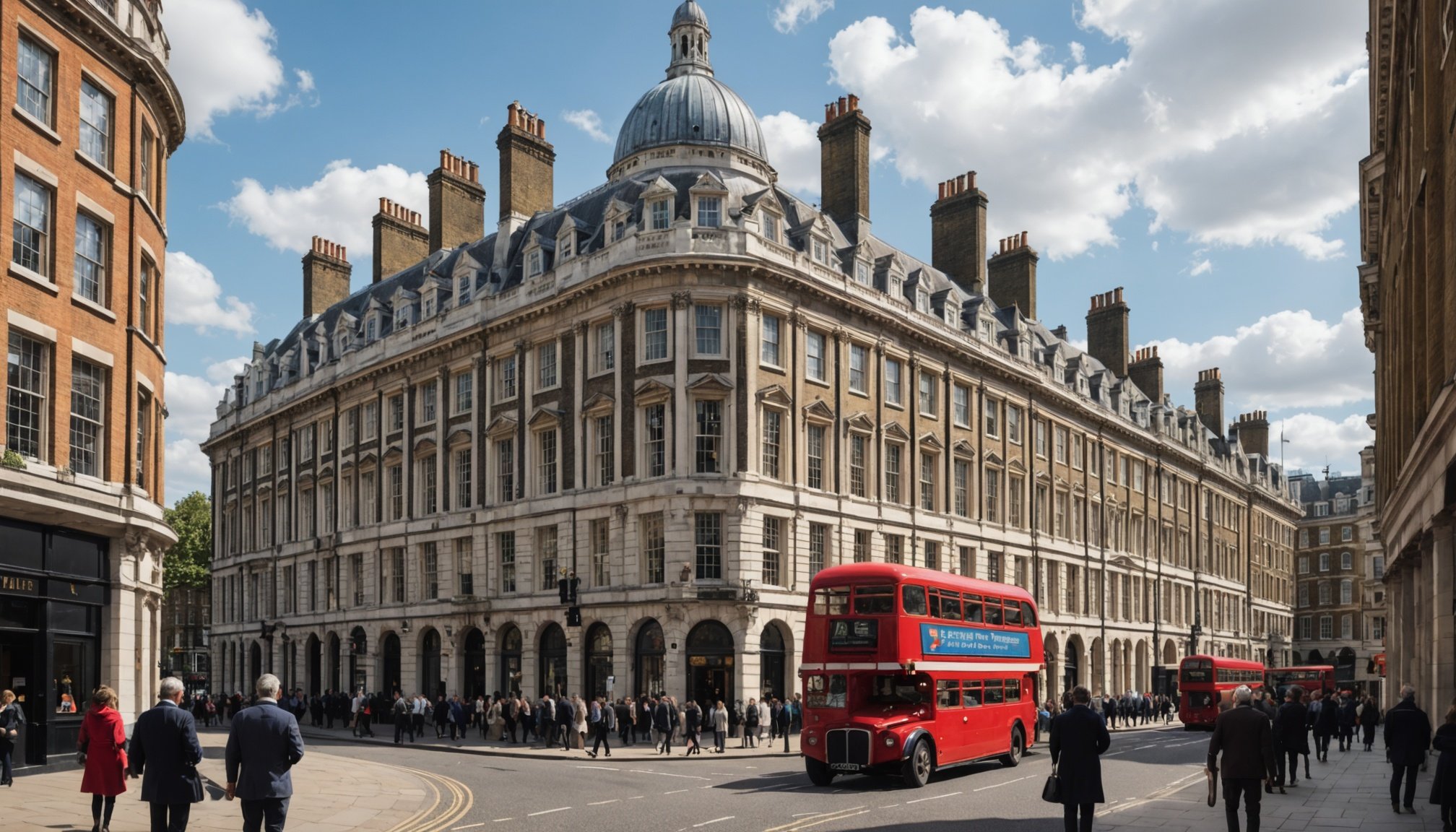Overview of London’s Financial Heritage
London’s financial history has long been intertwined with its development. As a global financial hub, its narrative is rich with significant events that have steered not only the city but the world economy. These historical financial events are pivotal in comprehending how London became what it is today.
The importance of London’s financial heritage can be seen through landmarks such as the Bank of England and the Royal Exchange, both playing crucial roles in shaping the financial framework of the country. The Royal Exchange was the cornerstone of London’s trading and finance activities for centuries. Similarly, the Bank of England, established in 1694, greatly influenced modern banking systems and economic policies.
Also read : Unveiling hidden historical gardens in the uk: your ultimate guide to magical guided tours
Financial history in London also underpins its economic resilience and adaptability over time. From the establishment of pioneering banking institutions to surviving economic upheavals, finance has been integral in propelling the city’s infrastructure and innovation.
These elements highlight the necessity of exploring and appreciating London’s financial heritage through guided historic tours and educational resources. By walking through history, one gains a richer understanding of these landmark events and their lasting impact on London’s present and future.
Additional reading : Unveiling britain”s iconic breweries: the definitive guide to planning an unforgettable guided tour experience
Top Historical Walking Tours
Walking tours in London offer an immersive way to grasp the city’s rich financial history. These guided experiences take you through significant landmarks, deeply enriching your understanding of London’s development.
The City of London Financial Heritage Walk
This tour delves into the City of London’s financial core, featuring iconic sites such as the Bank of England and the Royal Exchange. It guides participants along a thoughtfully mapped route that showcases the architectural grandeur and tales of economic ingenuity. Engaging narratives complement the sights, bringing to life anecdotes that illustrate the city’s historical tapestry.
The Victorian Banking Tour
Focusing on Victorian-era finance, this tour underscores the transformative impact of 19th-century institutions on London’s financial landscape. Participants journey through the past, exploring pivotal roles played by Victorian banking establishments. The tour highlights their contribution to progress and unearths fascinating facts about the era.
Exploring the Thames and Trade
This excursion emphasises the Thames River’s pivotal role in commerce and trade development. It unfolds the story of how river trade buoyed London’s economic prosperity, linking strategic trade sites along its banks. The tour illustrates the river’s enduring significance, seamlessly weaving historical exploration into an enjoyable journey of discovery.
Practical Information for Tour Participants
Embarking on historic tours in London requires strategic planning to fully appreciate the city’s financial heritage. Here are some indispensable tour tips to ensure a rewarding experience.
Booking your slot in advance is advisable. The best times are weekdays, as weekends often attract larger crowds. Early morning tours promise a more relaxed pace with fewer tour participants, allowing for deeper historical exploration.
Tours usually span 2-3 hours, with a moderate walking pace suitable for most individuals. Comfortable shoes and weather-appropriate clothing are essential. These guided tours cover various London landmarks, so prepare for occasional uneven surfaces and navigation through bustling areas.
Ensure you bring a charged camera or smartphone to capture significant sites, given the rich visual feast offered by these guided tours. Additionally, keep a water bottle handy to stay hydrated.
A positive attitude toward learning and curiosity to delve into London’s financial past will enhance your experience. Engage with guides, who are often walking encyclopaedias of historical anecdotes, making the tour both informative and enjoyable.
Plan wisely, ask questions, and immerse yourself in the vivid stories woven into London’s financial tapestry to make the most of your visit.
Additional Resources and Further Reading
For those eager to delve deeper into London’s financial history, a diverse selection of resources can enrich your understanding beyond the historic tours. Recommended books such as “The Ascent of Money” by Niall Ferguson provide insightful perspectives into the evolution of finance. This book uncovers financial narratives shaping world economies, illustrating London’s significant role with historical depth.
Documentaries like “The Giants of London” visually explore the city’s landmarks, such as the Bank of England and the Royal Exchange, offering visual context to these storied sites. This format can be particularly engaging for visual learners, providing a vivid narrative that complements historical exploration.
Online resources are invaluable for in-depth research. Websites like British History Online host archives and documents detailing financial events and policies that have influenced global markets. Additionally, the Museum of London’s online collections provide detailed insights into artefacts and exhibits related to London’s financial developments.
For tour enthusiasts, tourism guides like VisitLondon can assist in planning further historic explorations, providing options for guided or self-guided adventures across notable London landmarks. Leveraging these resources fosters a comprehensive appreciation of London’s rich financial tapestry.




















